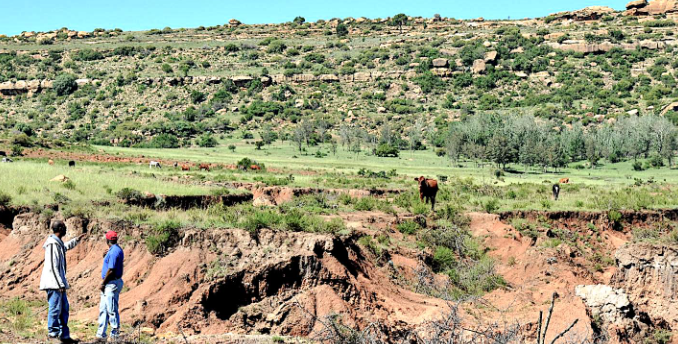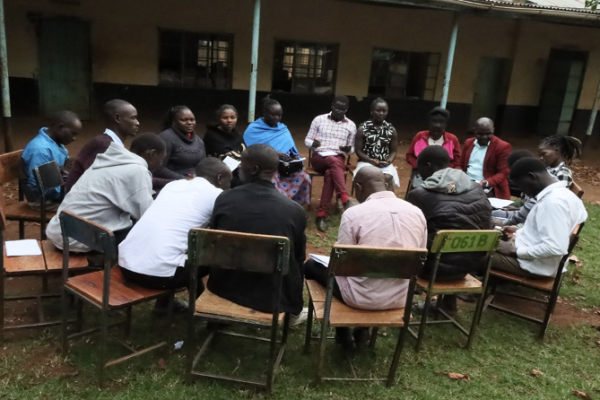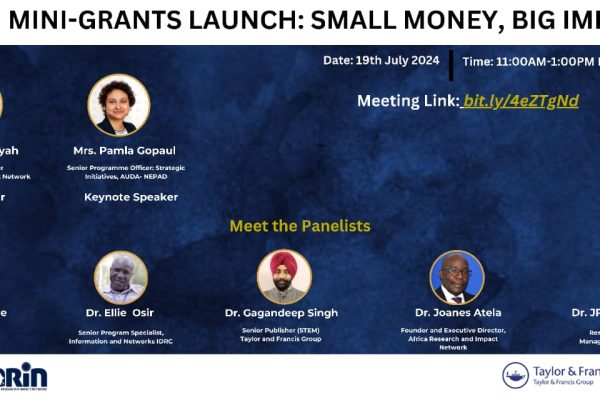By: Jerry Ariel, Florence Onyango
Every year on June 5th, the world observes World Environment Day established by the United Nations at the 1972 Stockholm Conference on the Human Environment. This day emerged from discussions on fostering harmony between human actions and the environment. The first celebration in 1973 carried the theme “Only One Earth,” and World Environment Day has been celebrated annually ever since.
Led by the United Nations Environment Programme (UNEP), World Environment Day serves as the UN’s primary platform to encourage global environmental awareness and action. Held annually since 1973, the Day has also become a critical platform for advancing progress on the environmental aspects of the Sustainable Development Goals.
The theme for World Environment Day 2024, “Accelerating land restoration, drought resilience and desertification progress,” is a stark reminder of the pressing environmental challenges we face. Climate change, land degradation, and biodiversity loss – all fueled by unsustainable human activities, threaten the very foundation of our existence. Globally, roughly 2 billion hectares of land are degraded, impacting the lives and livelihoods of over 3 billion people. Without significant intervention, this crisis will lead to further mass extinctions. According to the Food and Agriculture Organization of the United Nations’ (FAO) 2020 Global Forest Resources Assessment, the world lost at least 100 million hectares of healthy, productive land annually between 2015 and 2019.
Sub-Saharan Africa faces a particularly dire situation. Since 2015, an estimated 163 million hectares have succumbed to land degradation. A 2009 UNEP study revealed that 12.3% of Kenyan land is severely degraded, with 52% moderately degraded and another 33% vulnerable.
Land degradation has both direct (climate) and indirect (human) drivers. Indirect factors include population growth, conflicts leading to refugee settlements, inappropriate soil management practices, deforestation, shifting cultivation patterns, insecure land tenure, and variations in climate. Climate change further exacerbates these issues through rising temperatures, changes in rainfall patterns, increased windstorms, and extreme weather events.
Despite growing awareness and efforts from communities and governments, deforestation continues. According to the FAO’s 2020 forest resources assessment, Africa experienced the highest annual net forest loss globally between 2010 and 2020, at a staggering 3.9 million hectares per year. This deforestation, along with the conversion of forests to agriculture and infrastructure, translates to a loss of 4.3 million hectares annually. These losses have a devastating impact, as forests act as crucial carbon sinks, essential for mitigating climate change.
Adding to the challenge, most African communities grapple with the effects of climate change despite minimal contributions to global greenhouse gas emissions. A 2022 climate risk report for East Africa highlights the region’s high vulnerability and low readiness for climate change adaptation. These statistics underscore the urgent need for action, aligning with the UN Decade on Ecosystem Restoration (2021-2030) which aims to halt and reverse ecosystem degradation.
The good news is that successful restoration efforts are underway in some Sub-Saharan African countries. Botswana, for example, has significantly reduced land degradation and committed a substantial portion of its land to achieving land degradation neutrality. Kenya’s Ministry of Environment and Forestry is also making strides, aiming to restore 5.1 million hectares of forests by 2030 Large-scale restoration efforts have the potential to sequester a significant portion of atmospheric carbon. Estimates suggest these efforts could capture around three billion tonnes of carbon dioxide in the soil annually. This translates to offsetting roughly 10% of the world’s current annual energy-related emissions – a substantial contribution to climate change mitigation.
Furthermore, these efforts can promote the adoption of low-carbon lifestyles, leading to additional health and well-being benefits. However, achieving this ambitious goal requires commitment and investment from countries around the world. The target is to restore a staggering 1.5 billion hectares of degraded land by 2030. Several key approaches, implemented in an integrated manner, are crucial for halting land degradation:
- Locally-Led Actions (LLAs): Restoration programs should be driven by local communities, indigenous groups, and relevant stakeholders. This participatory approach empowers local actors to co-create solutions, fostering a sense of ownership and ensuring the long-term sustainability of initiatives. Inclusive decision-making processes enable local communities to co-design interventions and lead the implementation process.
- Investment in Early Warning Systems: Effective early warning systems are essential for detecting emerging threats like drought or invasive species. This allows for timely intervention and mitigation of land degradation impacts. Strengthening these systems involves active participation of local communities and indigenous groups in design, implementation, and maintenance. Their traditional ecological knowledge and on-the-ground observations are valuable resources for developing context-specific indicators and monitoring protocols, further enhancing the process and increasing ownership.
- Research for Evidence-Based Actions: Research plays a critical role in informing effective restoration strategies. Prioritizing research directly relevant to the needs and challenges faced by local communities and ecosystems most affected by land degradation is essential. Combining scientific research with traditional ecological knowledge leads to more comprehensive and holistic restoration initiatives. This ensures research findings translate into actionable restoration strategies and interventions, informing the upscaling of successful practices across multiple sites.
- Nature-Based Solutions: Nature-based solutions offer promising ways to halt degradation across diverse ecosystems. Examples include urban forestry to reduce flooding, agroforestry to improve soil health and increase carbon sequestration, and practices that provide additional income sources for rural communities (e.g., food, fodder).
- Integration of Land Restoration Targets in Nationally Determined Contributions (NDCs): Integrating land restoration targets into NDCs aligns national efforts with the UN Decade on Ecosystem Restoration and the Bonn Challenge. This approach can help mobilize resources and investments for upscaling restoration activities across different agroecological zones. It can further leverage international climate finance and development assistance for these efforts. However, effectiveness hinges on setting ambitious yet achievable land restoration targets aligned with global commitments and national development priorities.
- Monitoring and Evaluation: A robust monitoring and evaluation framework allows project implementers to continuously collect data and monitor restoration activities. This information is then used to inform adaptive management decisions, enabling adjustments to restoration strategies, techniques, and resource allocation based on lessons learned.
World Environment Day serves as a stark reminder of the pressing need for land restoration. By prioritizing research that informs locally-led initiatives, early warning systems, and nature-based solutions, we can translate scientific understanding into effective action. A multi-faceted approach, integrating traditional knowledge and cutting-edge science, offers a powerful path towards achieving the UN Decade’s goals and restoring our planet’s ecosystems.
© ARIN Press, 2024



